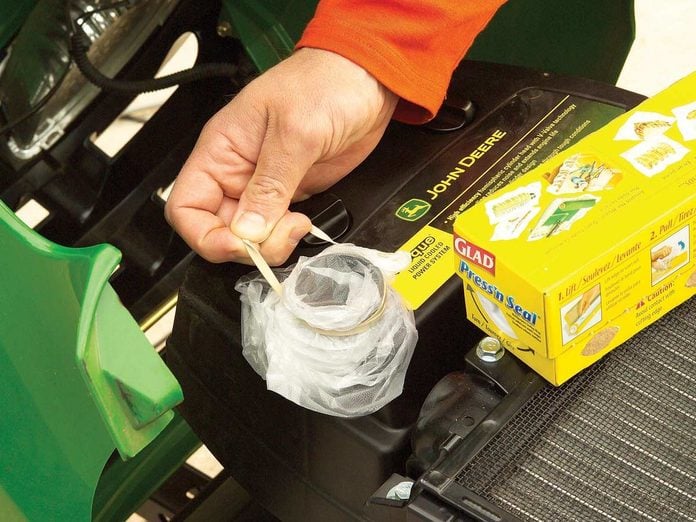
Winterize Your Lawn Mower
With your yard ready for fall, it’s almost time to put away your lawn tractor for the winter, but before you do that, take a few minutes to get a jump on spring maintenance.
- Moisture inside an unused engine leads to corrosion. ‘Fogging’ the engine — spraying an oily mist into each cylinder — prevents this. Just remove the spark plugs and blast in some aerosol fogging spray (sold at auto parts stores). Then, reinstall the spark plugs.
- Storing a battery that isn’t fully charged can lead to permanent damage, particularly in cold weather. Connect the battery to a battery charger and charge it until you get a reading of 12.7 volts.
- Stored gas slowly gums up the whole fuel system, and the repairs can be expensive. So add a fuel stabilizer such as STA-BIL or Seafoam to the gas tank before winter. (Adding stabilizer to your gas can year-round is also a good idea.) But remember that stabilizers aren’t effective in gas that contains ethanol. If you don’t know whether the gas contains ethanol, run the engine until the tank is empty.
It’s also helpful to cover the air intake and exhaust openings with plastic wrap or aluminum foil to keep mice or other critters from climbing in there to stay warm.
These are the projects to always do in fall:
Prevent future headaches by doing these projects in the fall, before it gets too cold.
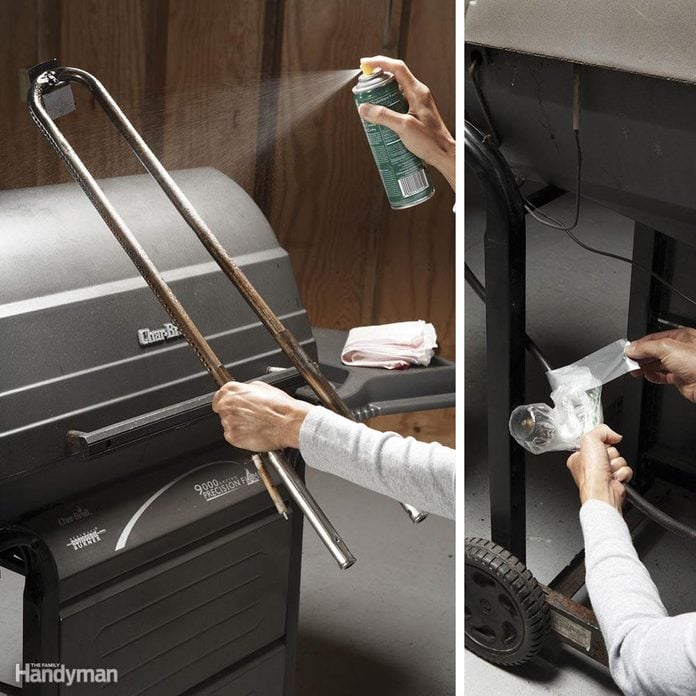
Winterize Your Gas Grill
If you don’t like grilling in the winter, it’s time to get your gas grill packed up and put away for the season. Start by deep cleaning your grill, making sure to remove all the grease and food scraps that may have built up in the hidden corners.
Shut off the gas at the LP tank, unfasten the burner, slip the gas tubes off the gas lines and lift out the unit. Coat the burners and other metal parts with cooking oil to repel moisture that can build up over the winter and to prevent rust. Then wrap the burner unit in a plastic bag to keep spiders and insects from nesting in the gas tubes during the winter. This is a common problem that can make for balky starts, uneven flames or even a one-alarm fire the next time you light your grill.
If you’re storing your grill outside during the winter, just keep the propane tank connected (but shut off) and put a protective cover over the entire grill when you’re done cleaning it. If you’re storing the grill indoors, don’t bring the tank inside, even into the garage or a storage shed. A small gas leak can cause a huge explosion if the tank is stored in an enclosed space. Instead, disconnect the tank and store it outside in an upright position away from dryer and furnace vents and children’s play areas. Tape a plastic bag over the grill’s gas line opening to prevent insects from nesting there.
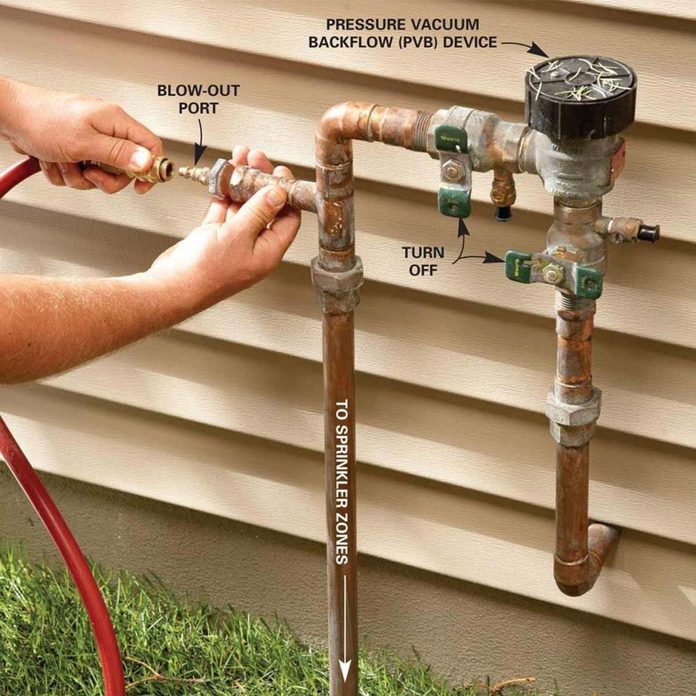
Winterize Your Sprinkler System
You can pay the irrigation company $125 every year to blow out your sprinkler system, or you can use your air compressor and do it yourself. You just have to be careful not to leave any water in the line or it might freeze over the winter and burst a pipe. Also be aware that even the largest home compressor isn’t powerful enough to blow out the entire system at once, so you’ll probably have to blow it out zone by zone.
If you’re into number-crunching and you have the original irrigation layout showing the gallons per minute (gpm) of each sprinkler head, just divide the total gpm of each zone by 7.5. That’ll give you the cubic feet per minute (cfm) your compressor needs to blow out the zone. Otherwise, just rent a 10-cfm compressor and hose from your local tool rental center.
Set the compressor air-pressure regulator to a maximum of 80 psi for rigid PVC pipe systems, or 50 psi for flexible black polyethylene pipe. Then turn off the water supply and set the system timer to open just one zone. Next, open the manual drain valve at the end of that zone (if equipped).
Close off both valves on the backflow preventer. Then remove the plug on the blow-out port and screw in a quick-connect hose adapter. Snap on the air hose and connect the other end to the compressor (see photo). Then blow out the line. The heads should pop up and spit out water. Disconnect the hose as soon as they run dry.
Don’t overdo the blow-out — without water cooling the plastic gears, they can melt in less than a minute. So move on to the next zone and allow the heads to cool. Then, go back and blow out each zone a second time.
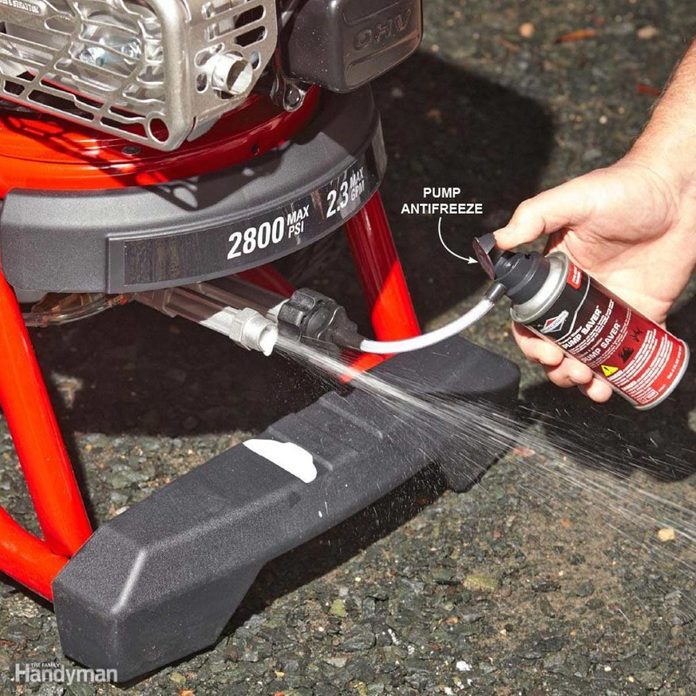
Winterize Your Pressure Washer
If you leave your pressure washer in the garage or outside in that uninsulated storage shed without draining the pump, the water can freeze and expand, which can destroy your machine in quick order.
Disconnect the hoses and spray an antifreeze/lubricant into the pump. That forces the water out and replaces it with antifreeze and lube. Pump antifreeze/lubrication is available at home centers. And if your air compressor stalls out, here’s how you can fix it yourself by replacing the unloader valve.

Lube Your Car Before Winter
Take some time to prepare your car for winter driving before the mercury bottoms out on you. Something that gets overlooked by a lot of people is taking a few minutes to lube locks, latches, hinges, window channels and weather stripping. That can prevent binding and freezing and save you the cost of a busted regulator. You can lube your entire vehicle in less than 20 minutes. All you need is dry Teflon spray, spray lithium grease, a rag and glass cleaner.
Start with the window channels. Lower the window glass and shoot dry Teflon spray down the front, rear and top window channels on each door. Soak the channels. Then run the window up and down several times to spread the lube. Finally, raise the window and clean off overspray with glass cleaner.
Then shoot the door and trunk/hatch lock cylinders. Use the spray straw to force the lock ‘door’ open. Then inject a quick shot of dry Teflon spray into the lock cylinder. Insert your key and rotate the lock to spread the lube.
Next coat all the weather stripping with dry Teflon spray. Then spread it with a cloth. Finish the job by lubing the hood, trunk or tailgate latches with lithium grease. Then spray the door hinges. Operate the latches and doors several times to spread the grease.
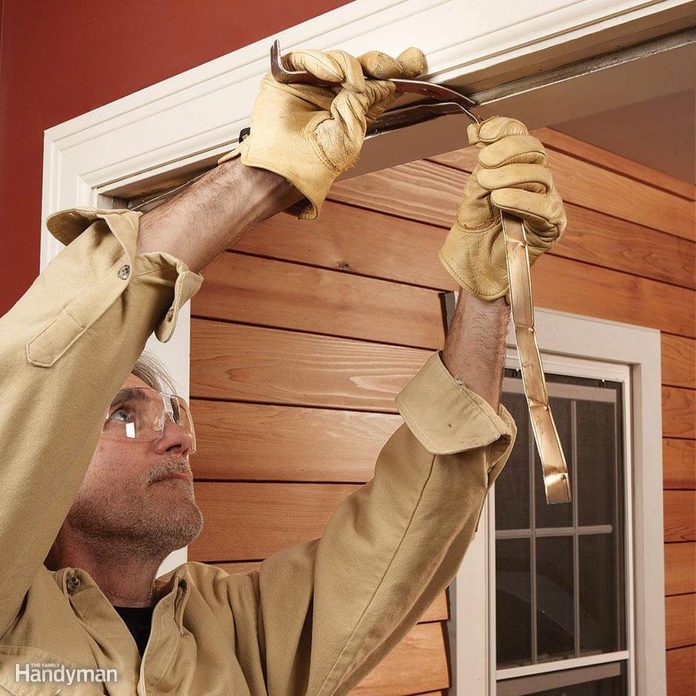
Check Weatherstripping on Your Doors
If you can see light creeping beneath exterior doors, so can air. Grab a few packages of self-adhesive rubber foam weatherstripping and go to town, sealing any and all doors that lead outside.

Bring Paint Indoors
Paint doesn’t handle extreme temperatures very well. So, if you live in a cold climate, add this to your fall home maintenance checklist: Bring the latex/acrylic paint into the house. And while you’re at it, don’t forget the latex caulk. Freezing ruins both latex paint and caulk.
Another temperature-related painting mistake is painting when it’s going to freeze. Paint can’t dry properly in freezing temps. It will only dry partway and will easily come off when touched.

Fix Driveway and Sidewalk Cracks
Changing temperatures and moisture can turn a small concrete problem into a big one. Moisture gets into cracks in your driveway and sidewalk during the winter and freezes, weakening the concrete and causing more damage. Take some time to repair broken concrete and extend the life of your sidewalk and driveway through winterization before they’re in need of full replacement.
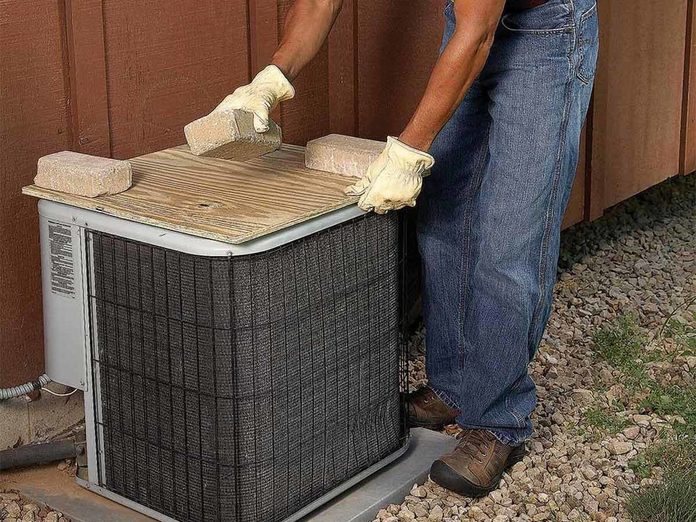
Cover Your Air Conditioner Compressor
There’s no reason to wrap your entire air conditioner for the winter, and many manufacturers advise against it because it can invite rodents and cause condensation, which can lead to early corrosion. But it’s not a bad idea to set a piece of plywood on top of the unit to protect it from falling icicles.
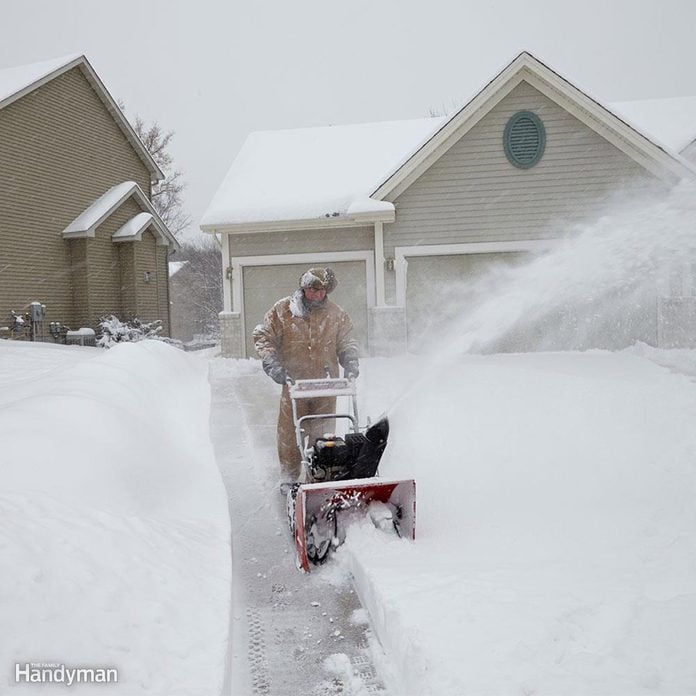
Get Your Property Ready for Snow
Before the snow flies and you start using your snowblower, take a few minutes to inspect your property. Remove rocks, dog tie-out cable, extension cords, holiday light cords and garden hoses. Then stake out paths that run near gardens so you don’t accidentally suck up rocks and garden edging. Mark your walk and driveway perimeters by pounding in driveway markers. If the ground is frozen, just drill a hole using a masonry bit and your battery-powered drill.
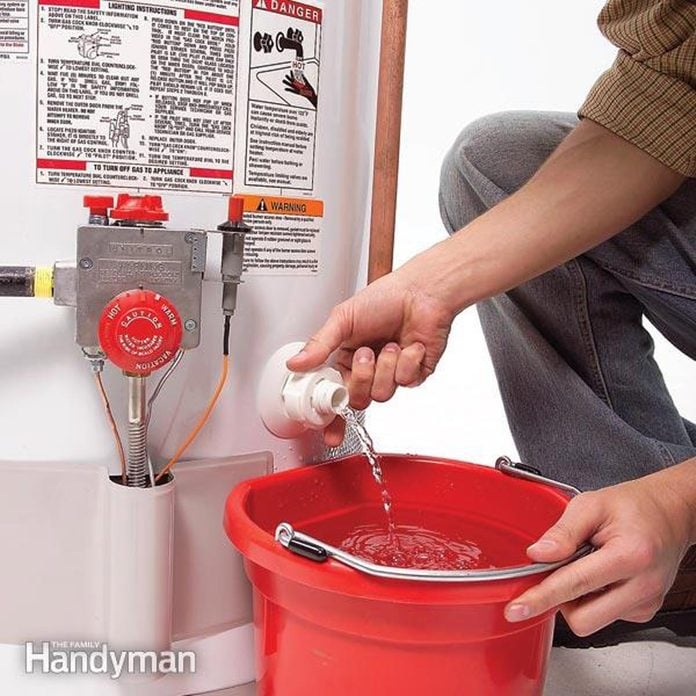
Check Your Water Heater
Extend the life of your water heater tank and maintain your water heater efficiency and safety with a few minutes of basic maintenance once a year. You should flush your hot water heater once a year to help remove sediment that accumulates in the bottom of the tank, especially if you have hard water. If sediment builds up, it can reduce the efficiency of your hot water heater, and you don’t want anything else contributing to already climbing utility costs.
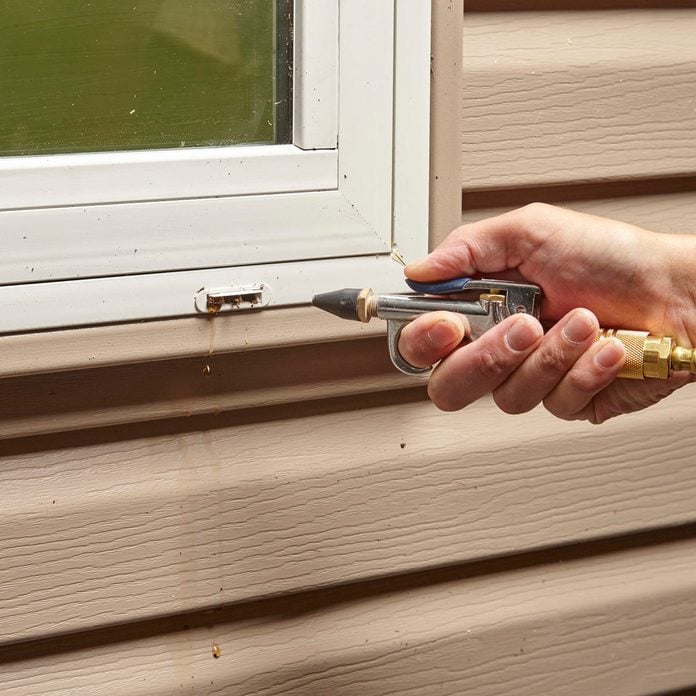
Clean Weep Holes in Windows
Weep holes may be the tiniest feature of many sliding windows and vinyl replacement windows, but they serve a big function. The little holes, located on the exterior bottom of the frame, are an outlet for rainwater to drain away from the home, but they often can become clogged up with debris. To make sure they’re working properly, spray the outside of the window with a garden hose – a steady stream of clean water should exit from the holes. If it doesn’t, use a wire hanger or compressed air to force the blockage out. Re-test with fresh water to ensure they’re completely cleaned.
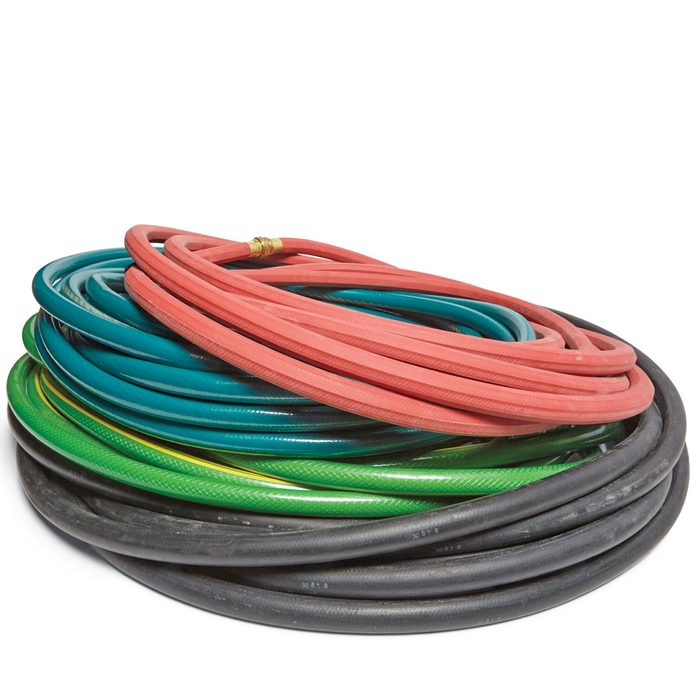
Drain Garden Hoses
It’s easy to forget about your garden hoses before winter sets in, but that’s a costly mistake. Water sitting in hoses stored outside can freeze, causing your hose to crack and split. Blast out the water with an air compressor or stretch them out on a sloped yard or driveway.

Check Your Chimney
Creosote buildup causes chimney fires. You should have your chimney professionally inspected or cleaned after every 70 fires. If you burn wet wood (which you shouldn’t), have it inspected or cleaned every 50 fires.
Can’t remember the last time you had it cleaned by a pro? A quick way to tell if your chimney needs cleaning is to run the point of your fireplace poker along the inside of your chimney liner. If you find a 1/8-in. layer (or more) of buildup, call a chimney sweep.
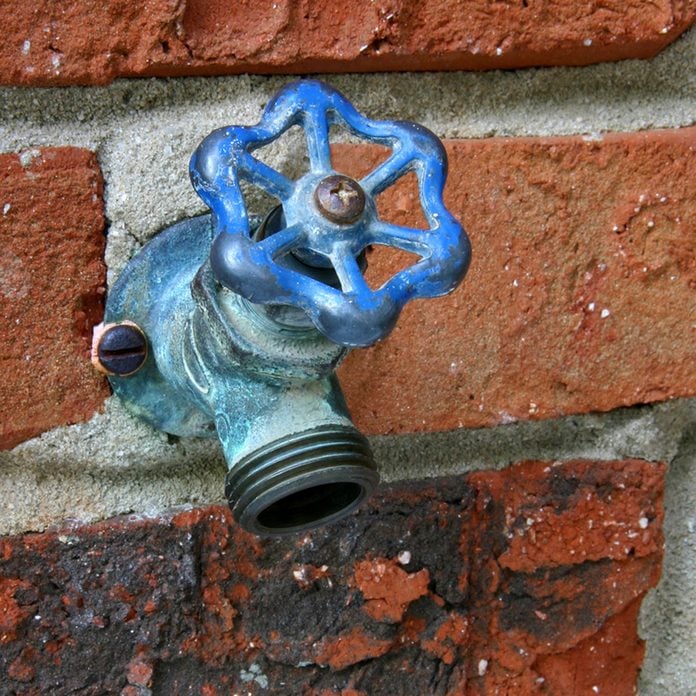
Install Frost-Proof Outdoor Faucets
Frost-proof outdoor faucets reduce the possibility of the line freezing. They also prevent unsanitary water from contaminating your water system. Installing a new outdoor faucet takes just a few hours and will give you peace of mind all winter long.

Drain Mechanical Sprinklers
Like hoses, water can freeze inside sprinklers, causing damage and ruining them. If you don’t want to replace sprinklers every spring, take a few minutes to drain them.
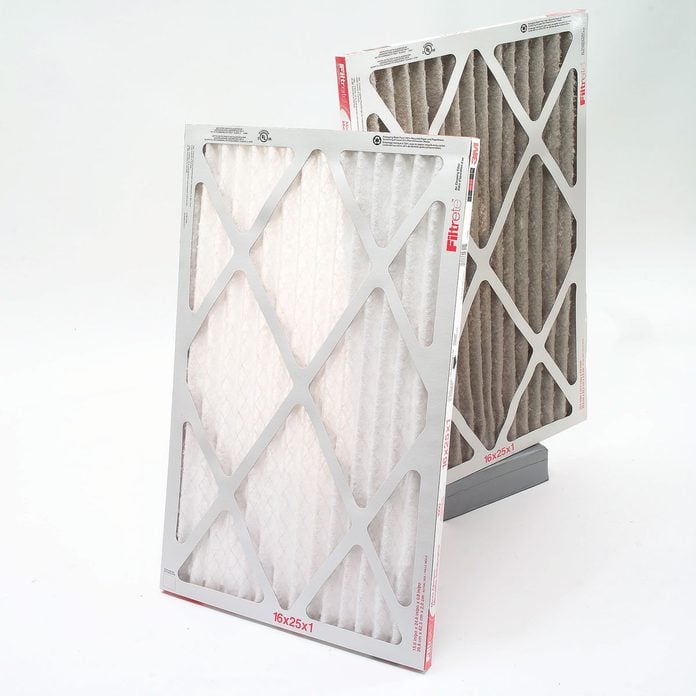
Change Your Furnace Filter
Change your furnace filter to keep your furnace in good shape (twice a year if you have central air conditioning) — it’s easy. If you haven’t changed it in a while, make sure you install a fresh one before you turn your furnace on for the first time.
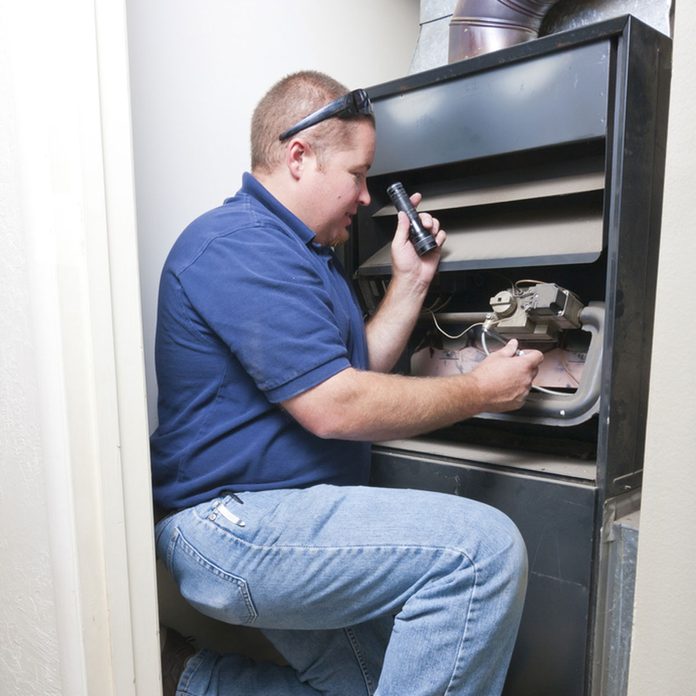
Inspect Your Furnace
Check the operation of your furnace before you really need to use it. With a few tools and some time, you can perform a DIY furnace inspection to head off problems before they start.

Deep Clean Rugs and Carpeting
Take advantage of one of those beautiful fall afternoons to open the windows and give your rugs a deep clean. Take area rugs outside and give them a good shake (or a good whack), then give them a thorough vacuum with your shop vac. Don’t forget interior carpets – you can rent a carpet cleaner and give your carpet a deep clean before you start hosting holiday gatherings.
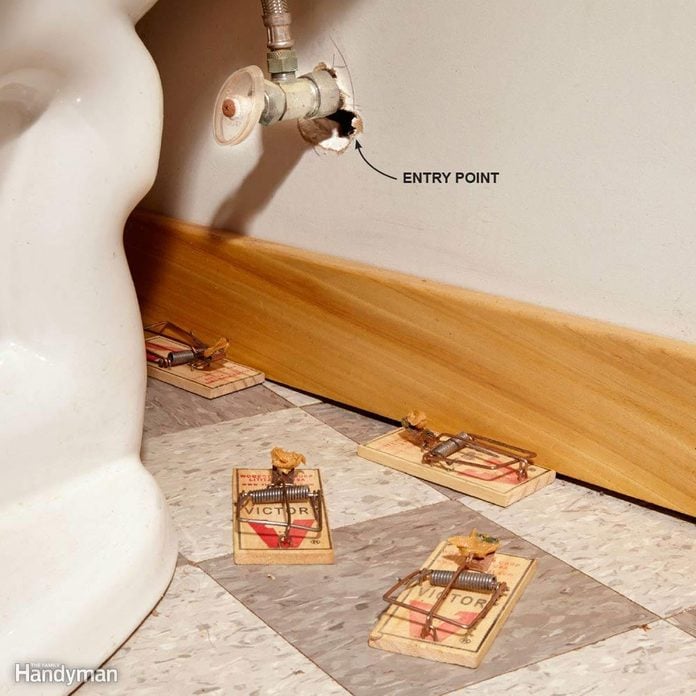
Protect Your House from Pests
As temperatures drop, mice and other vermin want to find warm places to hunker down. Don’t let it be your house. Seal up any critter gaps and have a game plan for getting rid of any critters that might make themselves at home.